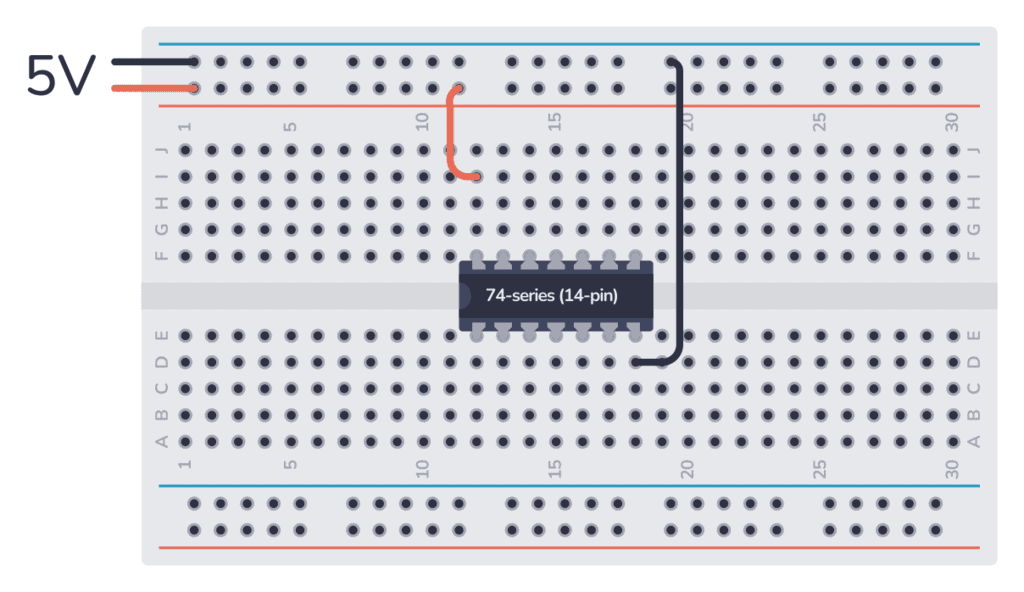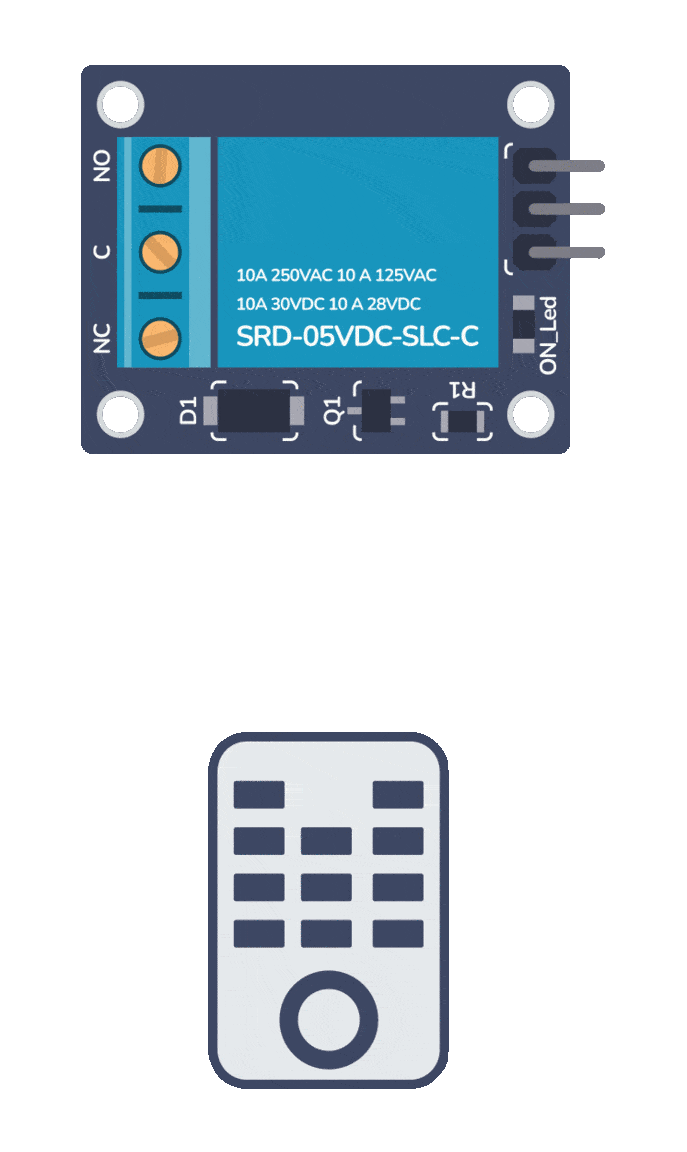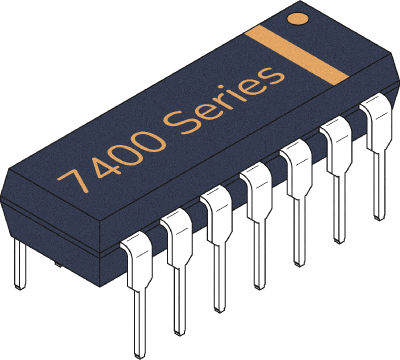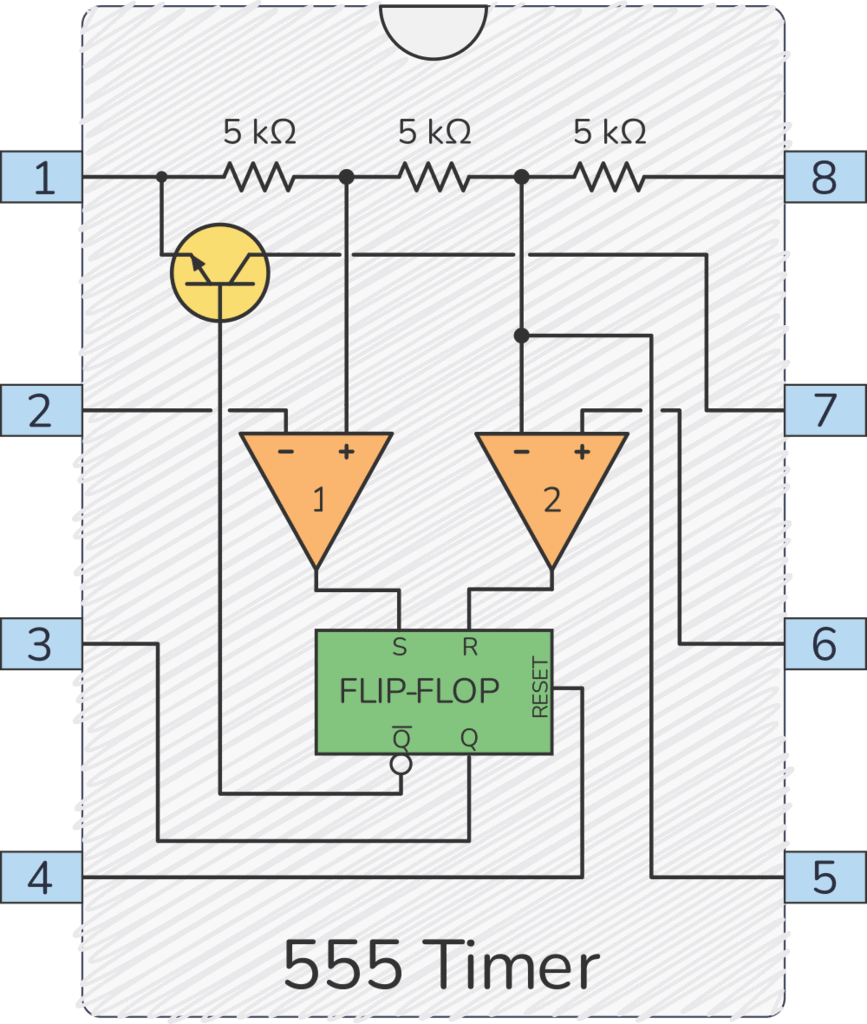The 74×22 (ex 74LS22) is a chip that comes packed with two 4-input open-collector NAND gates. The benefit of an open collector output is that it facilitates connections with chips utilizing varied logic levels, but remember, it’s not interchangeable with a typical NAND gate chip.
Learn how it works and how to use it with this beginner-friendly guide and start using NAND gates in your projects.

What does the 74HC22 / 74LS22 do?
The 74×22 gives you two 4-input open-collector NAND gates that you can use individually. A NAND gate is a logic gate that outputs 0 (LOW) only if all of its inputs are 1 (HIGH).
How To Use This Chip
The 74HC22 comes in a 14-pin package, and you need to connect its power pins before you can use it. Most 7400 ICs support a VCC voltage of 5V. One difference between the HC and LS version of the chip is that the 74HC22 supports 2V to 6V, while the 74LS22 only supports 5V.
This chip uses open-collector outputs which means you can only sink current, not source it.
The output of each gate in the 74HC22 can sink around 4 milliamps when it’s powered with 5 volts. On the other hand, the 74LS22 can usually handle about 8 milliamps of current. But, these values might differ depending on the chip manufacturer.

74×22 Pinout
The 74×22 has 14 pins and contains two 4-input open-collector NAND gates laid out as shown in the pinout diagram below:

| Pin # | Type | Description |
|---|---|---|
| 1 | Input | Input to the first NAND gate. |
| 2 | Input | Input to the first NAND gate. |
| 3 | NC | Not in use (Not Connected). |
| 4 | Input | Input to the first NAND gate. |
| 5 | Input | Input to the first NAND gate. |
| 6 | Output | Open-collector output from the first NAND gate. |
| 7 | Power | Connect to ground (GND). |
| 8 | Output | Open-collector output from the second NAND gate. |
| 9 | Input | Input to the second NAND gate. |
| 10 | Input | Input to the second NAND gate. |
| 11 | NC | Not in use (Not Connected). |
| 12 | Input | Input to the second NAND gate. |
| 13 | Input | Input to the second NAND gate. |
| 14 | Power | Positive power supply (VCC). Connect to +5V power. |
Alternatives and Equivalents for 74HC22 / 74LS22
There are many versions of the 74×22 chip. They all have the same functionality, but with different specifications such as supported voltages and maximum current output.

Build Something Useful This Evening
This gadget lets you use any IR remote-control to control your lamp, garden lights, heater oven, garage door, or anything else.
Here’s a list of a few equivalents of this chip:
- 74HC22 (High-speed CMOS)
- 74HCT22 (High-speed CMOS, TTL compatible)
- 74LS22 (High-speed TTL)
- 74LVC22 (Low Voltage TTL)
- 74AC22 (Advanced CMOS)
- 74ALS22 (Advanced Low-Power Schottky TTL)
- 74F22 (Very High Speed)
- 74C22 (CMOS, similar to the 4000-series)
Some manufacturers also add a prefix, such as the SN74LS22 by Motorola.
Can’t find the 74×22 anywhere? Then try one of the following IC alternatives:
- 74×13 – Dual 4-input NAND gates (with Schmitt-trigger inputs).
- 74×18 – Dual 4-input NAND gates (with Schmitt-trigger inputs).
- 74×20 – Dual 4-input NAND gates.
- 74×40 – Dual 4-input NAND gate buffers.
- CD4012 – Dual 4-input NAND gates.
If you can’t find the 74×22 IC in your local electronics store, don’t worry, you’ll most likely find it in one of the stores listed on this page of online stores where you’ll find components and tools for all your electronics projects.
Datasheet for the 74LS22 and 74HC22 chips
Download the PDF datasheet for your version of the 74×22 here:

10 Simple Steps to Learn Electronics
Electronics is easy when you know what to focus on and what to ignore. Learn what "the basics" really is and how to learn it fast.


